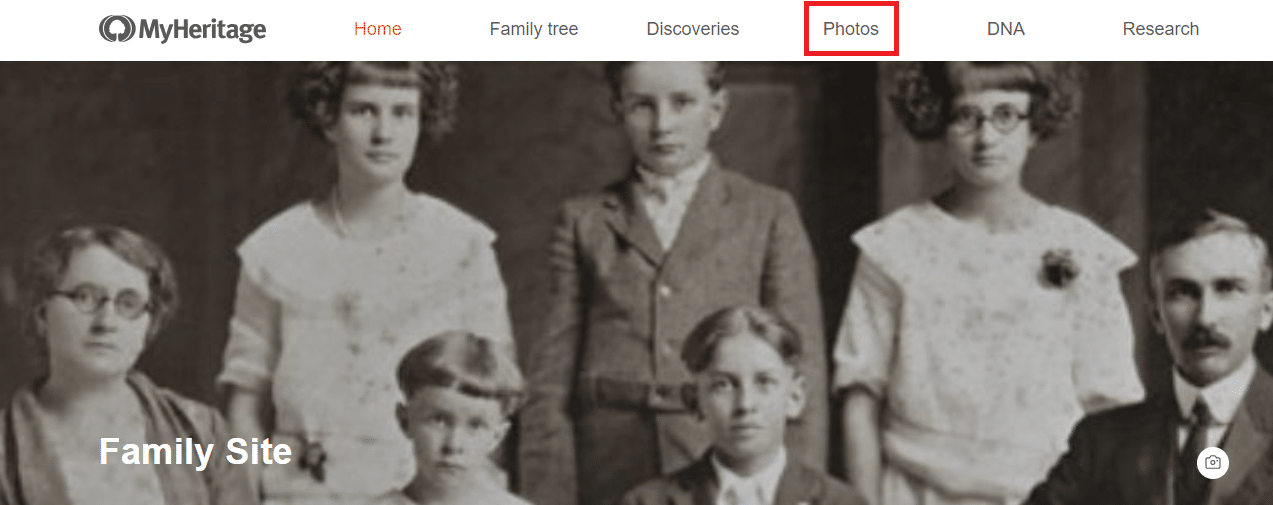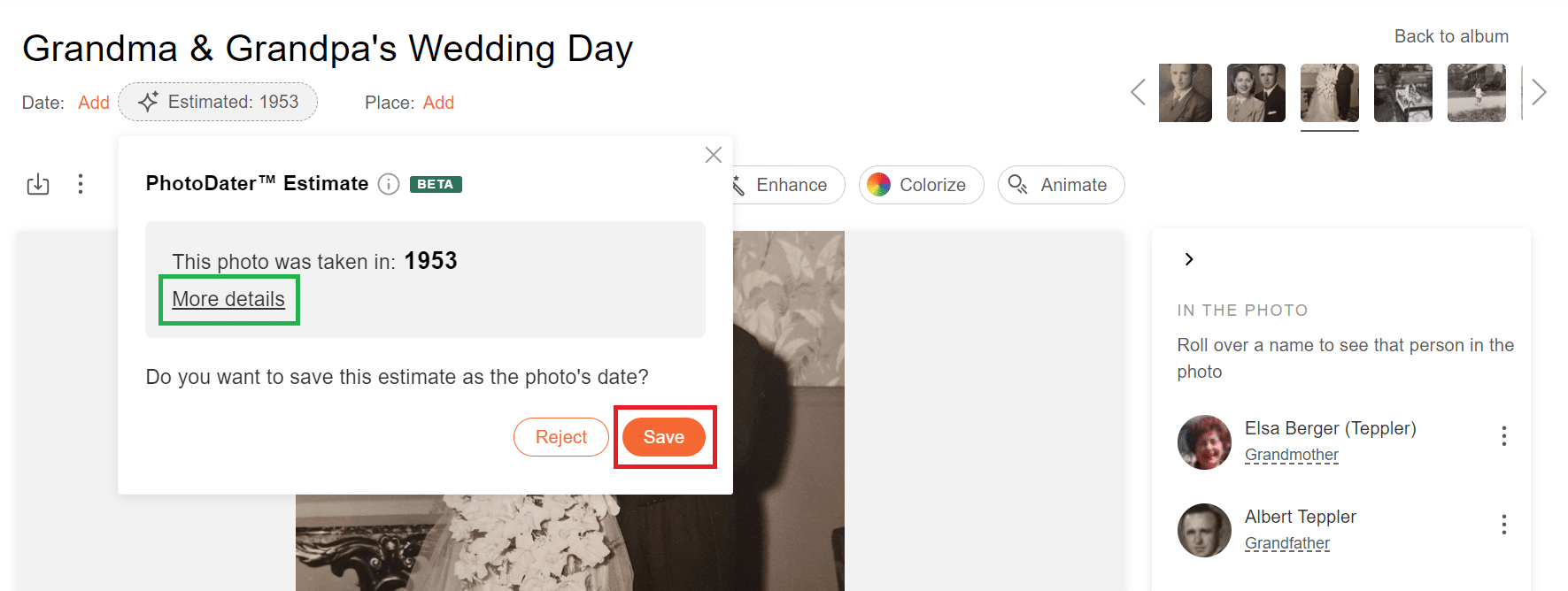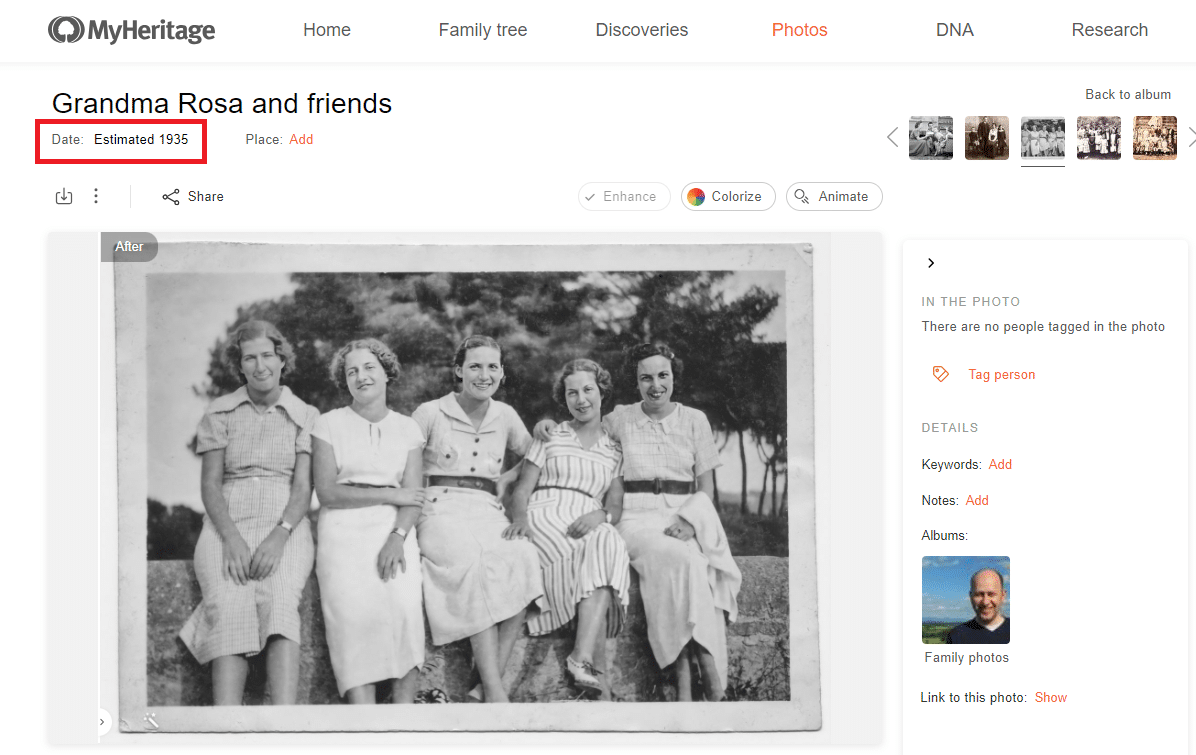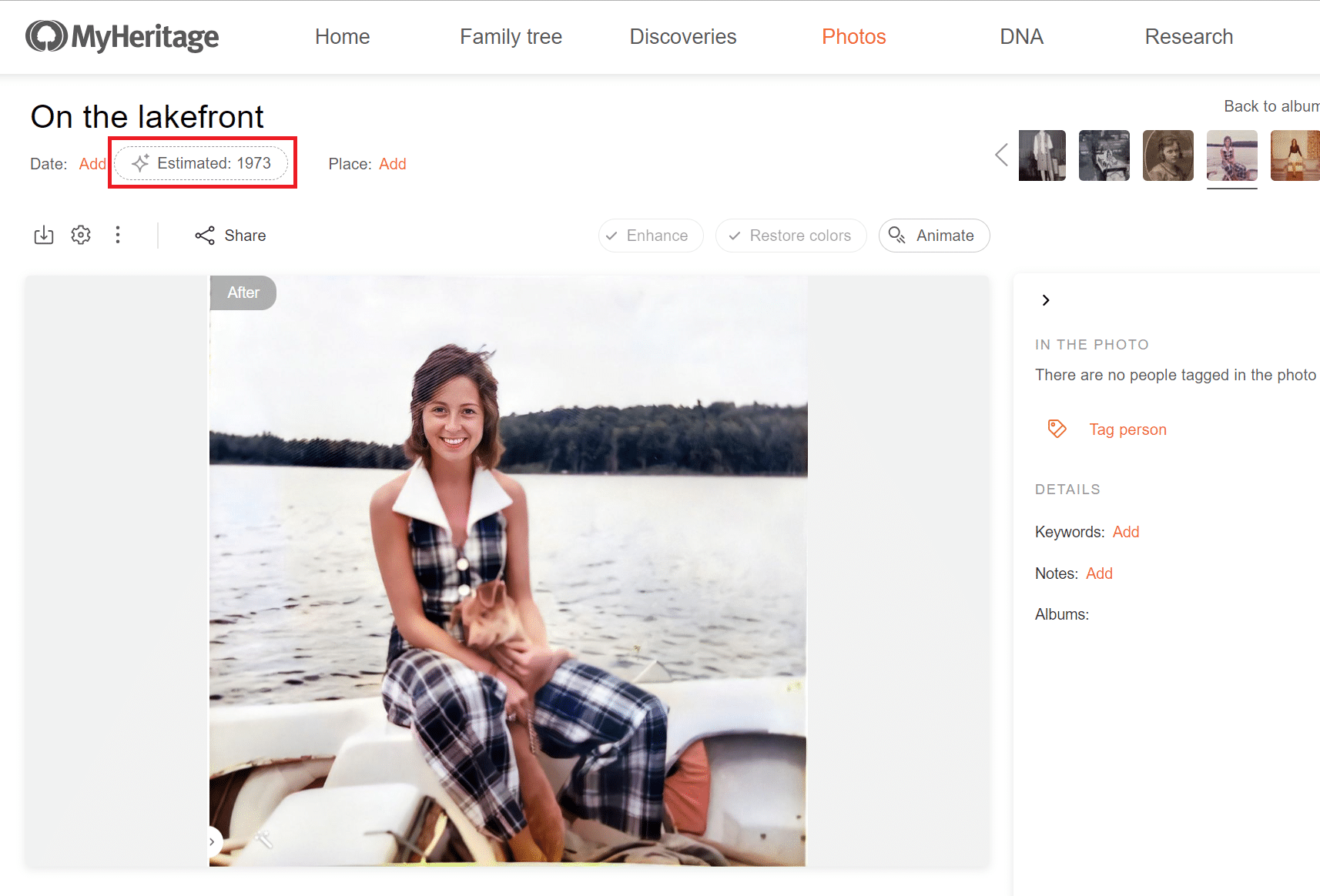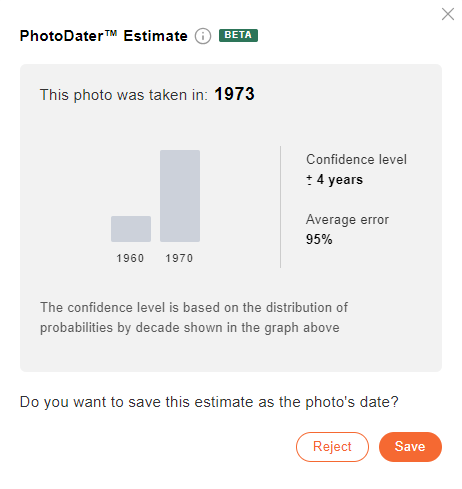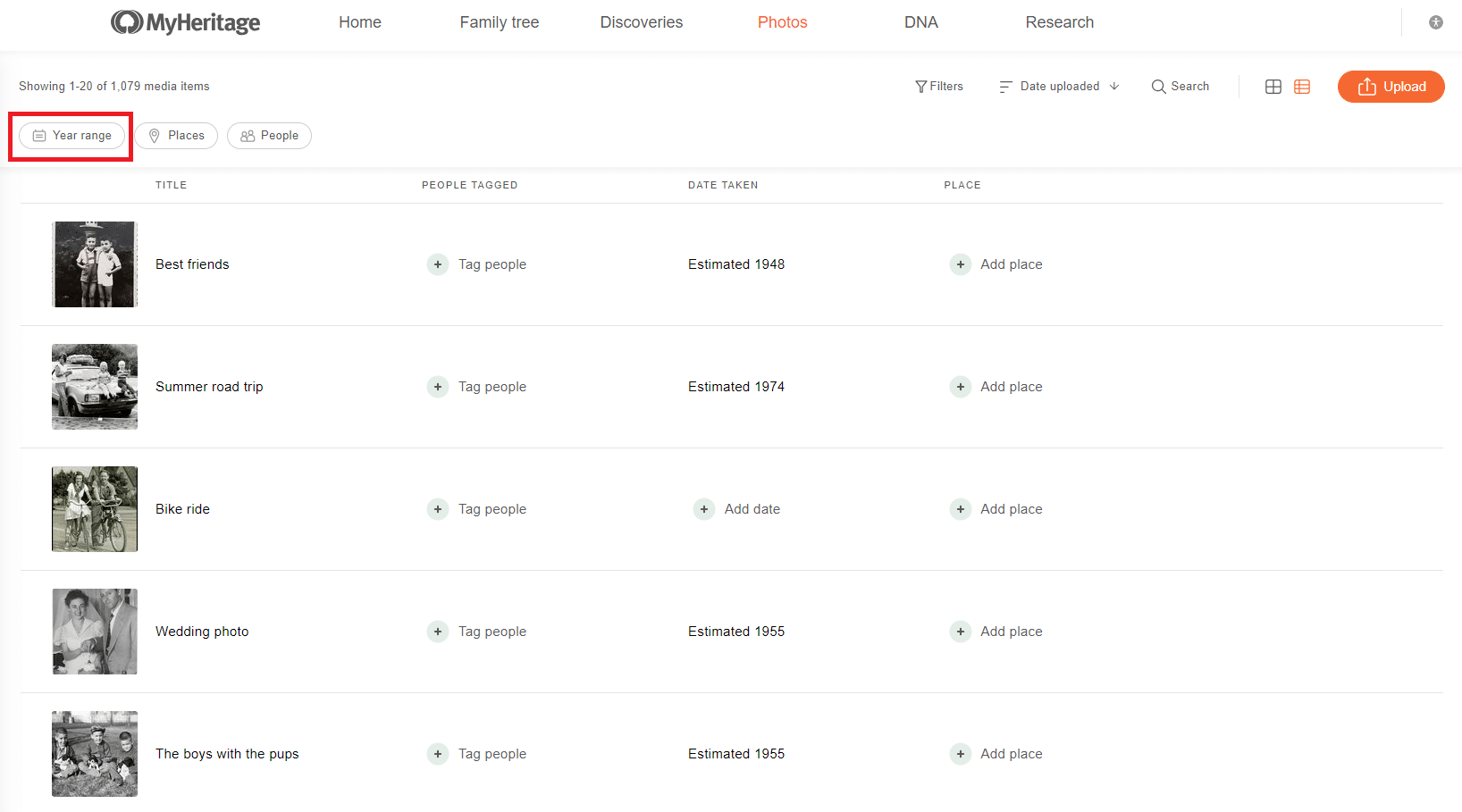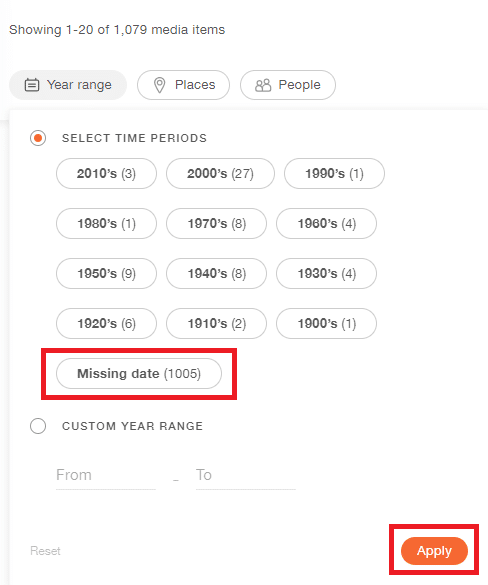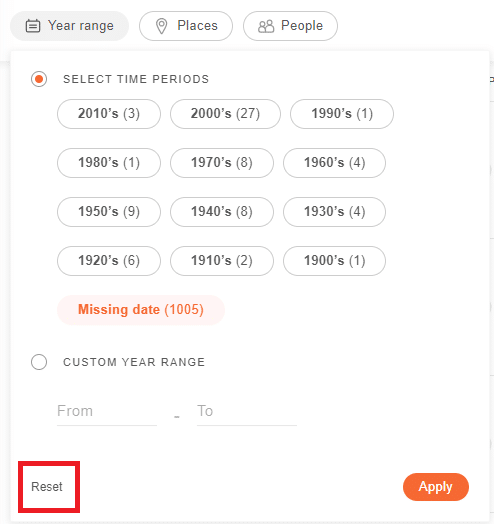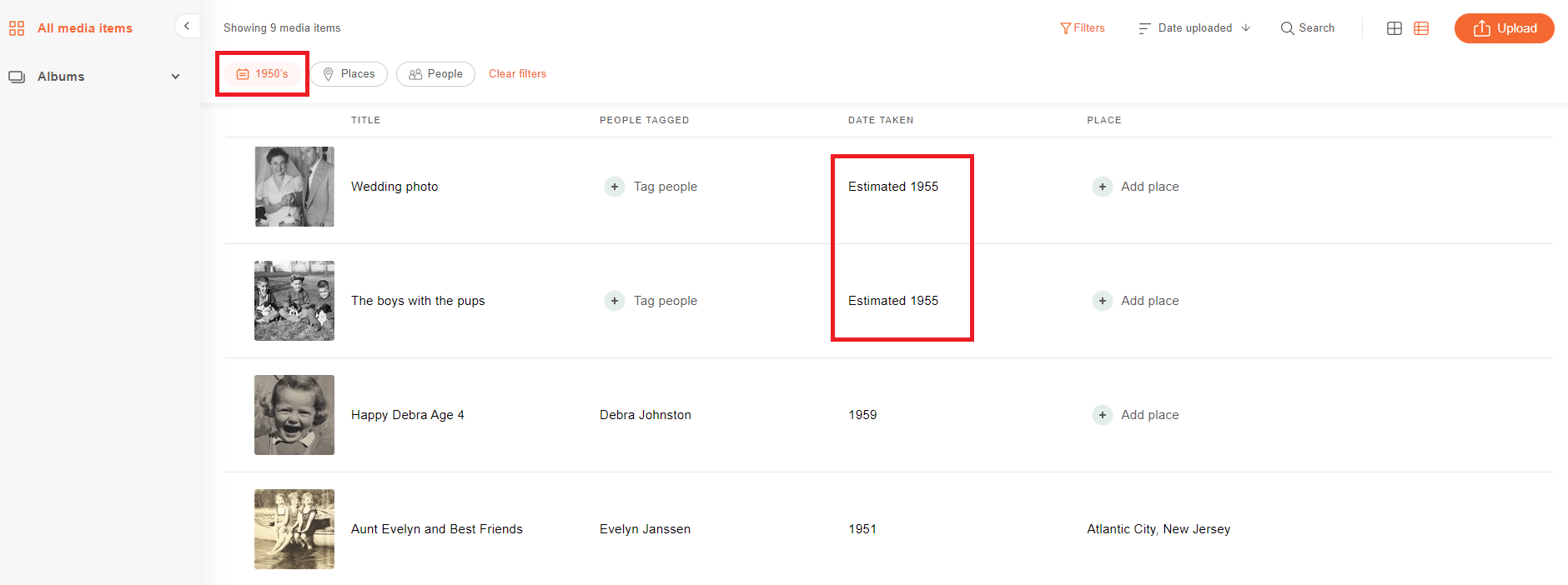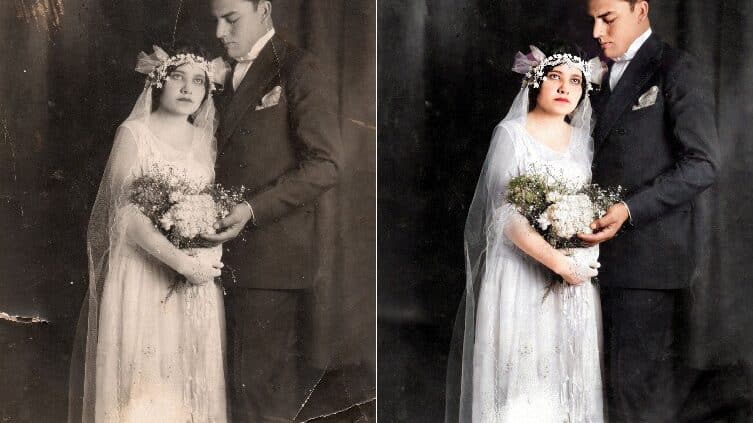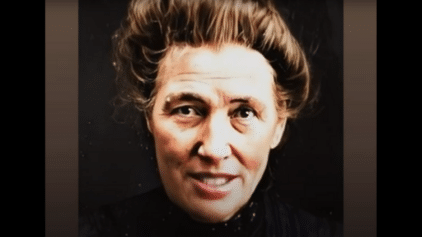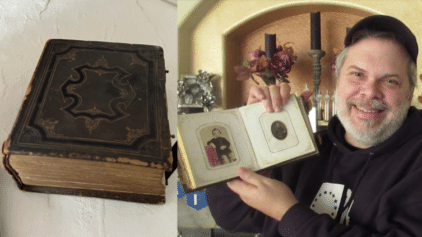Introducing PhotoDater™, an Exclusive, Free New Feature to Estimate When Old Photos Were Taken
- By Erica
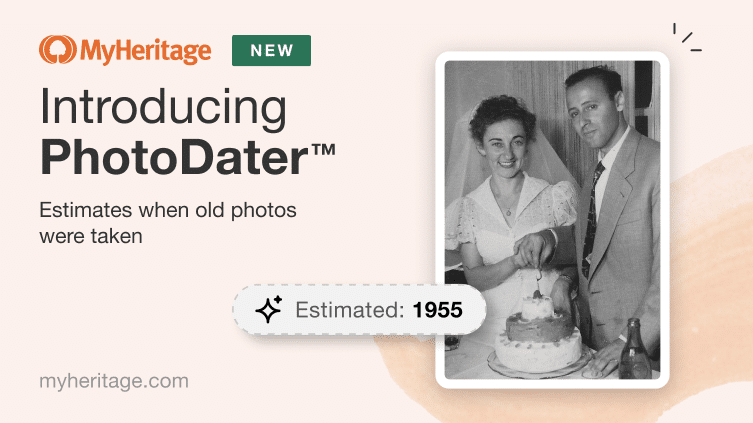

If you are like most genealogists, you probably have cherished old family photos whose details, such as when they were taken, remain a mystery. Perhaps you flipped them over hoping to find more details, only to discover that your ancestors who treasured these photos didn’t leave any information behind. Until now, missing details about your photos could have remained a mystery forever, but here at MyHeritage, we set out to find a solution. Today we’re excited to announce the release of PhotoDater™, a groundbreaking, free new feature that estimates the year a photo was taken, using Artificial Intelligence (AI) technology.
PhotoDater™ is one-of-a-kind: MyHeritage is the only genealogy service that offers date estimation for historical photos. Using powerful technology developed by our AI team, PhotoDater™ gives its best guess when a photo was taken. This can help you unlock further clues about who appears in the photo and the event at which it was taken, to solve mysteries in your genealogy research. PhotoDater™ is completely free!
Check out the cool video below to see what PhotoDater™ can do:
PhotoDater™ is already receiving praise from experts in the genealogy community. Maureen Taylor, known throughout the genealogy community as The Photo Detective™, says, “PhotoDater™ is a stunning addition to the suite of photo tools offered by MyHeritage. It’s a good first step when trying to understand a photo mystery.” Thomas MacEntee of Genealogy Bargains says, “MyHeritage keeps finding fantastic ways to harness the power of AI for practical genealogical use. PhotoDater™ is a super useful feature that can take the guesswork out of analyzing undated photos.”
How it started
Our Founder and CEO, Gilad Japhet, came up with the idea for PhotoDater™ and first described it in his presentation at RootsTech in 2020.
How it works
PhotoDater™ uses a proprietary machine learning algorithm developed by MyHeritage to provide an estimate of the year when a photo was taken. The date estimation algorithm was trained on tens of thousands of curated, definitively dated historical photos to help the algorithm understand nuances such as clothing, hairstyles, facial hair, furniture, and other objects that are characteristic of a particular decade.
The historical photos used to train the model came from open-source repositories such as the Library of Congress. Photos uploaded by MyHeritage users and stored on the company’s servers were not used to train the AI model.
The algorithm provides date estimates for undated photos taken between 1860 and 1990, for which it is reasonably confident it can return results with high accuracy. Estimates are calculated only for photos that do not already have a date in the metadata, that include people, and that are actual photographs, not documents or gravestones. A photo of just a car or a scan of a historical record won’t receive a date estimate. Date estimates can be reviewed and saved by you to the photo’s metadata, or dismissed. If you prefer not to see any date estimates, you can turn off PhotoDater™ from the site settings menu.
Extensive testing of the algorithm’s accuracy, conducted using definitively dated photos that were not used in the original training set, revealed the estimates to be extremely accurate, not just on a decade level, but often closer to an actual year. Analysis of the testing set, displayed in the graph below, shows that for approximately 60% of the photos, PhotoDater™ provided date estimations that were within 5 years of the actual dates the photos were taken.
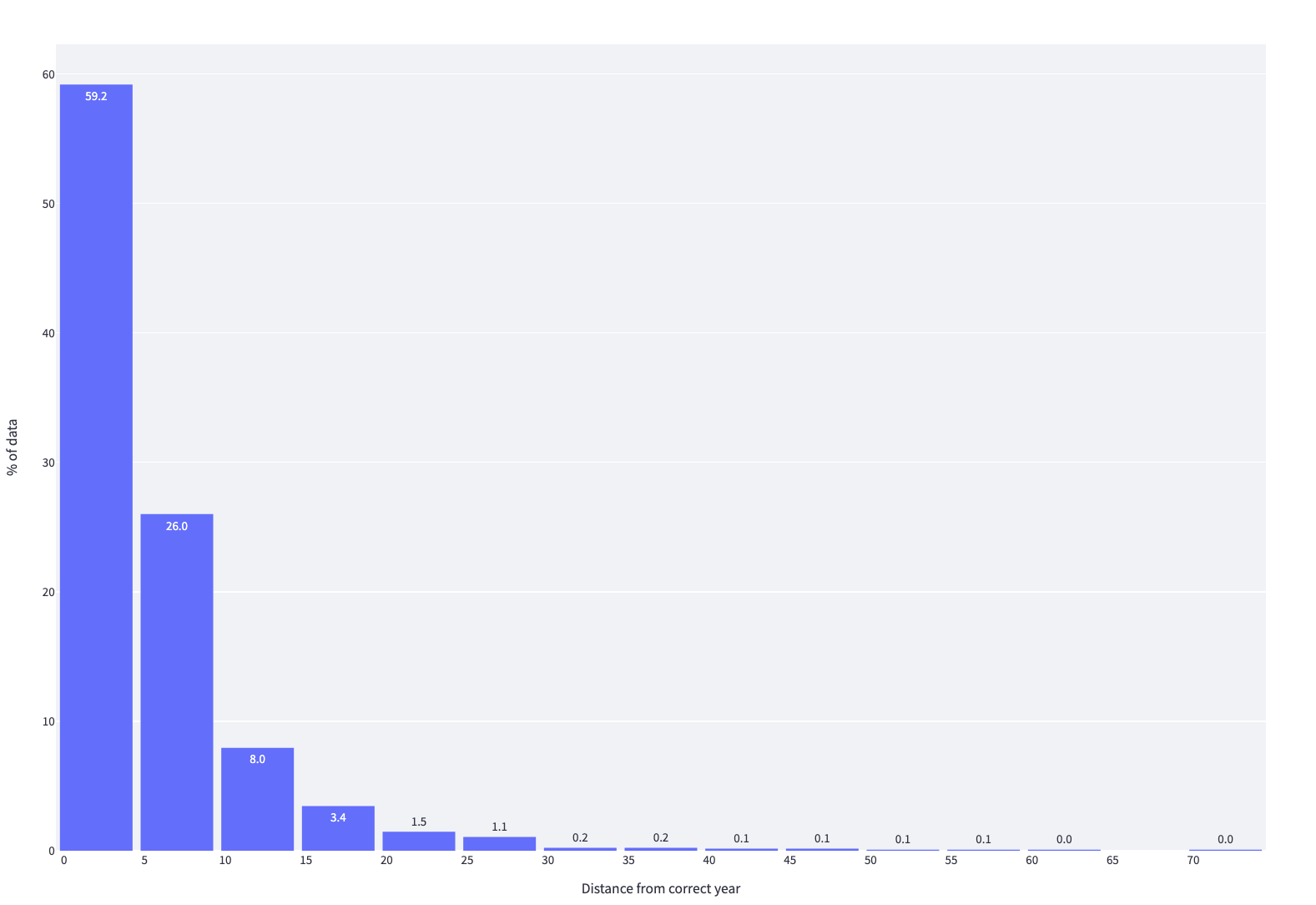
Histogram showing the accuracy of PhotoDater™: nearly 60% of its estimates are within 5 years of the actual year (click to zoom)
Using photo date estimates in family history research
Date estimates are valuable clues that can further your family history research. By figuring out when a mystery photo was taken, it becomes easier to identify who appears in it, and deduce what event it was taken at, such as a wedding or other milestone. For example, if the date estimate suggests that Grandma and Grandpa were married in 1931, based on their wedding photo, and you remember Grandma saying she got married when she was 23, or you can gauge her age from her appearance in the photo, you can narrow down her birth year to circa 1908. Nevertheless, it’s important to remember that date estimates are just that: estimates. While PhotoDater™ may narrow down the year with very high accuracy, it can be off by several years. This is why, if you choose to save the date estimate to the photo metadata, it appears as an estimated date in GEDCOM format, rather than an exact one. We’ll explain more about that below.
Accessing PhotoDater™
To use PhotoDater™, visit MyHeritage and click “Photos” in the main menu. If you have undated photos that aren’t on MyHeritage yet, upload them first to receive PhotoDater™ estimates.
The My Photos page will be displayed. Click the “Upload” button in the top right corner to upload more photos.
Click any photo’s thumbnail to view the Photo Page.
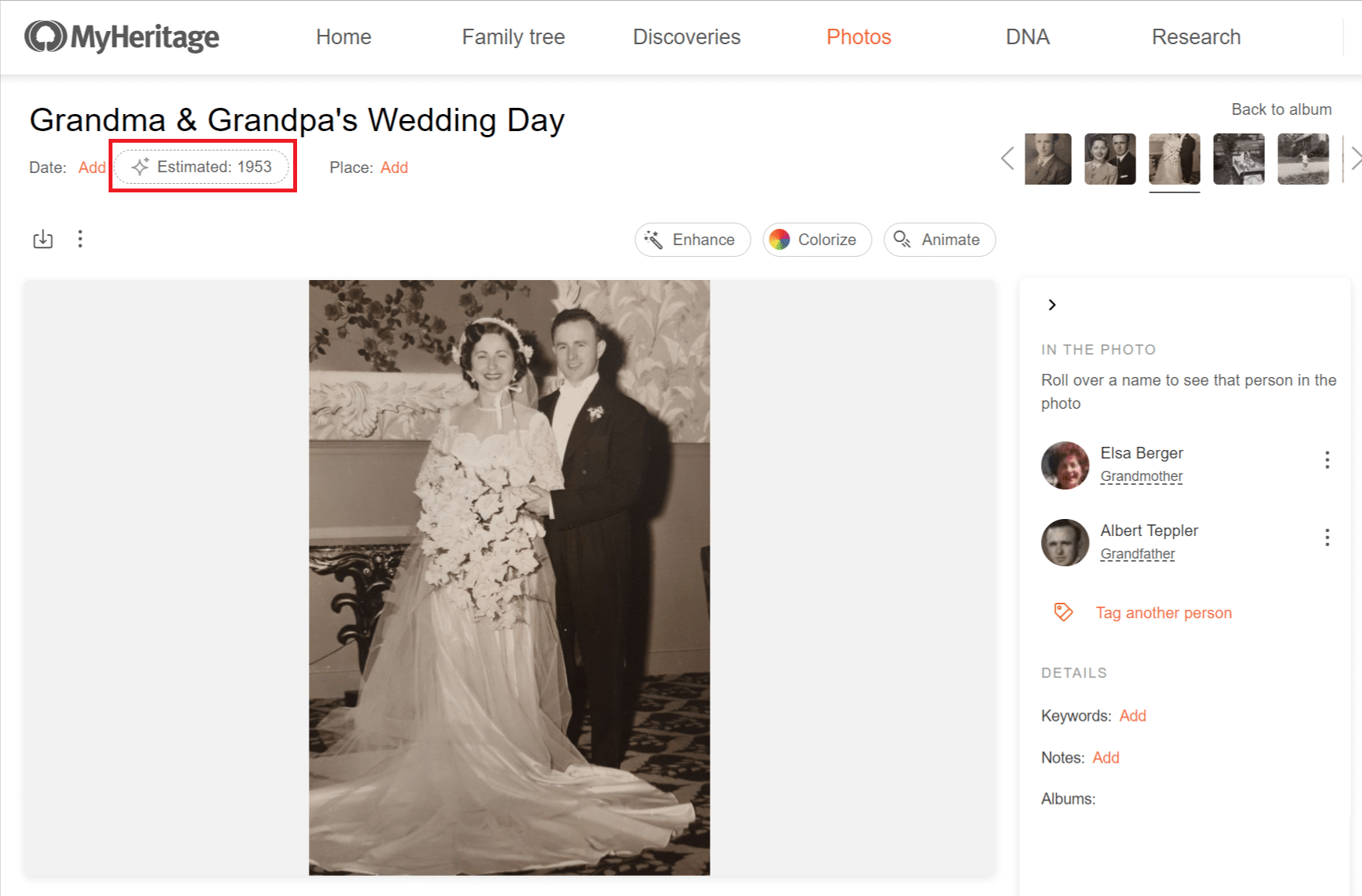
Photo Page: Date estimates will automatically appear for undated photos, as marked in red (click to zoom)
Whenever you view the Photo Page, if the photo is undated, PhotoDater™ will work automatically in the background to generate a date estimate. If its confidence is good enough, the estimate will automatically appear after a few seconds, above the photo, as marked in red in the above screenshot. Otherwise, no date estimate will appear. Occasionally, PhotoDater™ is unable to provide an estimate for a given photo due to the photo’s quality or other factors. Date estimates are not automatically saved to the photo’s metadata; because they are estimates, they need to be confirmed manually. It takes a few seconds for an estimate to get calculated and appear for the first time, but from that moment on it will be displayed instantly.
You can click the estimate to open a pop-up window where you can save the estimate (marked in red below), or reject it. To learn more about the estimate, click “More details,” marked below in green.
Clicking “More details” opens a histogram that explains more about the date estimate for the photo, and shows the confidence level of the estimate, as well as an average error range. In the example below, the histogram indicates a 90% confidence level that the photo was taken in 1953, with an average error range of 5 years, which means it was likely taken between 1948–1958. According to the histogram, there’s also a small possibility the photo was taken in the 1940s. The 1953 estimate is quite close — the particular wedding photo shown in this example was actually taken in 1951.
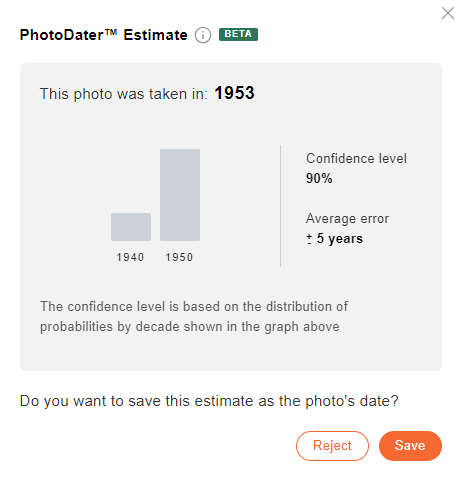
More details: Histogram of decades and the confidence level of PhotoDater’s estimate (click to zoom)
The histogram is very helpful because it gives you more information about the estimate. In the example above, it shows that if not from the 1950s, the photo was probably taken in the 1940s.
In the example below, PhotoDater™ estimates that the photo was taken in 1935. If the date estimate seems credible, or you can prove it using other sources, click the “Save” button in the popup to save the estimated year to the photo’s metadata. The year will be labeled as an estimate in the metadata, in a standard GEDCOM format for an estimated date. If the exact date of the photo is discovered at any point, you can easily replace the estimate with the actual date. You can also edit the date at any time, once it’s part of the photo metadata.
PhotoDater™ also works on photos originally taken in color. In the example below, the estimate places the year the photo was taken as 1973. The photo was in fact taken just one year earlier, in 1972.
The histogram for this photo is even more telling, and shows a 95% confidence level that the photo was taken in the 1970s, with an error range of just 4 years, but leaning towards the 1960s and not the 1980s.
Filtering your photos to see only undated ones
If you have already added dates to your photos (like any good genealogist should!) then you might want to filter your photos to show only the undated ones, and then see what PhotoDater™ can tell you about those photos. This is optional. To apply such a filter, do the following: click the list icon on the top right of the page to open List View for photos.
Once in List View, click the “Year range” filter on the top left of the list, marked in the screenshot above.
Select “Missing date,” and then click “Apply.”
Click any photo in the filtered list to open it and PhotoDater™ will automatically attempt to date it. To turn off the “Year range” filter, click “Reset” on the bottom left of the filter popup.
Date estimates in List View
After saving a date estimate, it will appear in the photo’s metadata in List View, in addition to the Photo Page. When filtering photos by year range, the results will also include photos whose saved date estimate falls within that decade.
In the near future, we plan to also add PhotoDater™ estimates to List View, so users can receive date estimates for their photos and save them from there, too. This means that, for the first time and exclusively on MyHeritage, you’ll be able to sort nearly all your photos by date, based on definitive and estimated dates.
Privacy
Photos that are uploaded to MyHeritage by users were not used to train the AI model. When PhotoDater™ processes a photo to give a date estimate, this is done on MyHeritage’s servers and the photo is not shared with any third party.
Many users will no doubt enjoy gaining new insights through this feature, while others may prefer to avoid estimates and only rely on hard facts. If you prefer not to receive date estimates for your photos, you can disable PhotoDater™ from the site settings menu by clicking My Privacy > Content and unchecking the box for PhotoDater™.
Availability
PhotoDater™ is a free feature that is currently available on the MyHeritage platform on desktop. PhotoDater™ will be available from your mobile web browser very soon, and in the near future we’ll be adding it to both the MyHeritage app and the new Reimagine photo app.
Try PhotoDater™ today!
Historical photos provide us with a tangible connection to our ancestors, and enrich our family history. With the addition of PhotoDater™, photos are more than heirlooms to be viewed and appreciated; they’re also tools for unlocking new discoveries. While date estimates should be taken with a grain of salt, they may lead to breakthroughs in your research.
Since 2020, MyHeritage is the undisputed industry leader in developing innovative features for family photos, and as always, there’s much more to come. We invite you to upload your photos to MyHeritage and take advantage of PhotoDater™ today!


